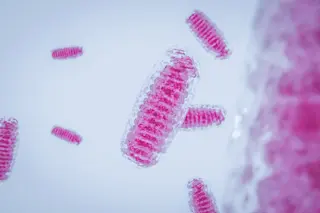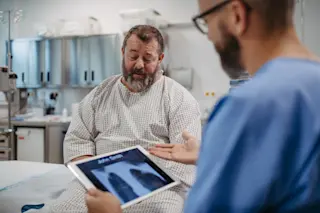If you think way, way back to your high school biology class, you might remember a little cellular structure called the mitochondrion. Its claim to fame is that it’s the “powerhouse” of the cell — the organelle in charge of creating energy. But it also contains its own DNA, separate from the traditional DNA we think of, which lives in the nucleus of a cell. That nuclear DNA contains genetic information from both of our parents. But in mitochondrial DNA (mtDNA), that genetic information only comes from one parent.
In some organisms like algae and plants, males are the ones who pass on their mtDNA. In humans, however, this genetic information pretty much always came from mom. Well, until now, it seems. In a paper published in PNAS this week, an international team of researchers reveal they’ve found evidence of paternal mtDNAin 17 people from three separate families.
It all ...














